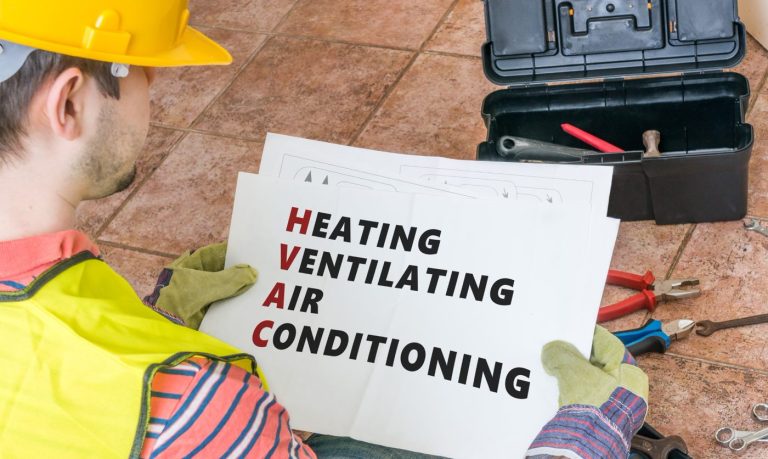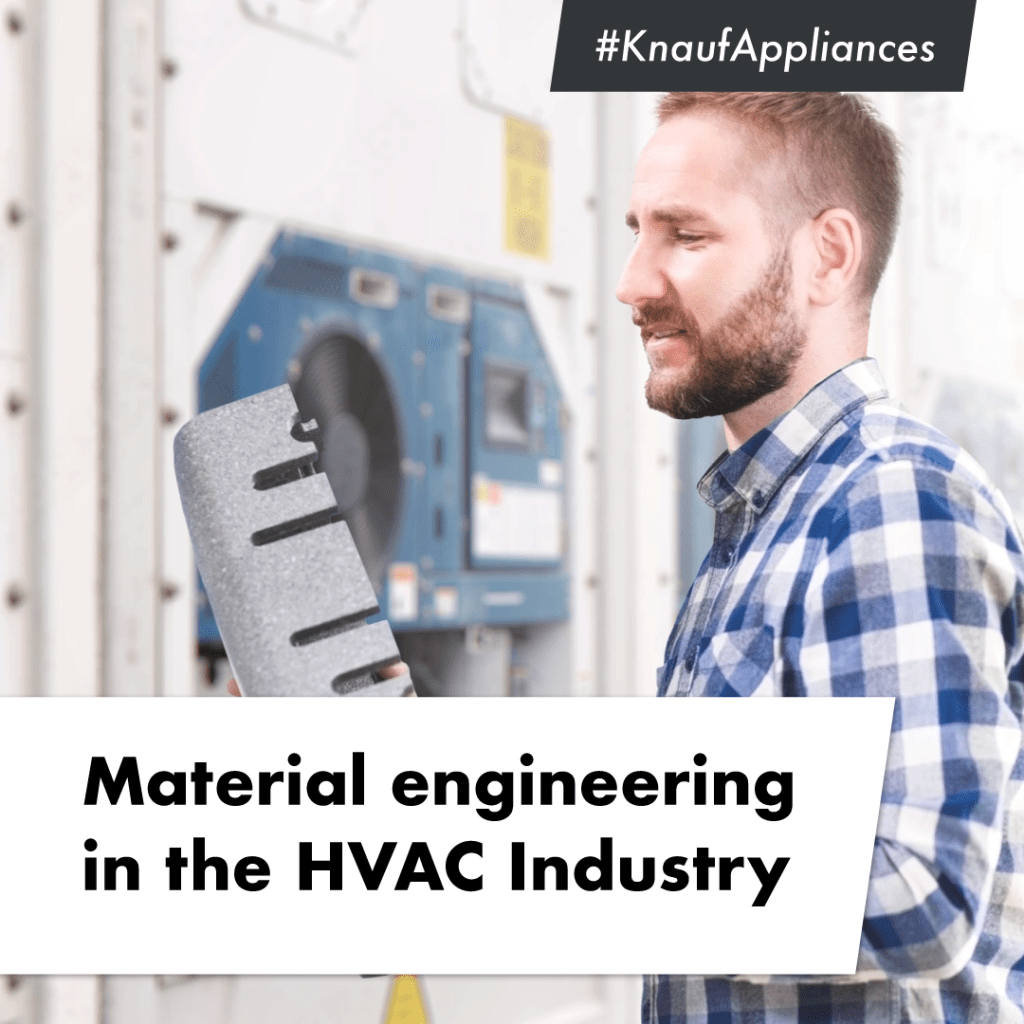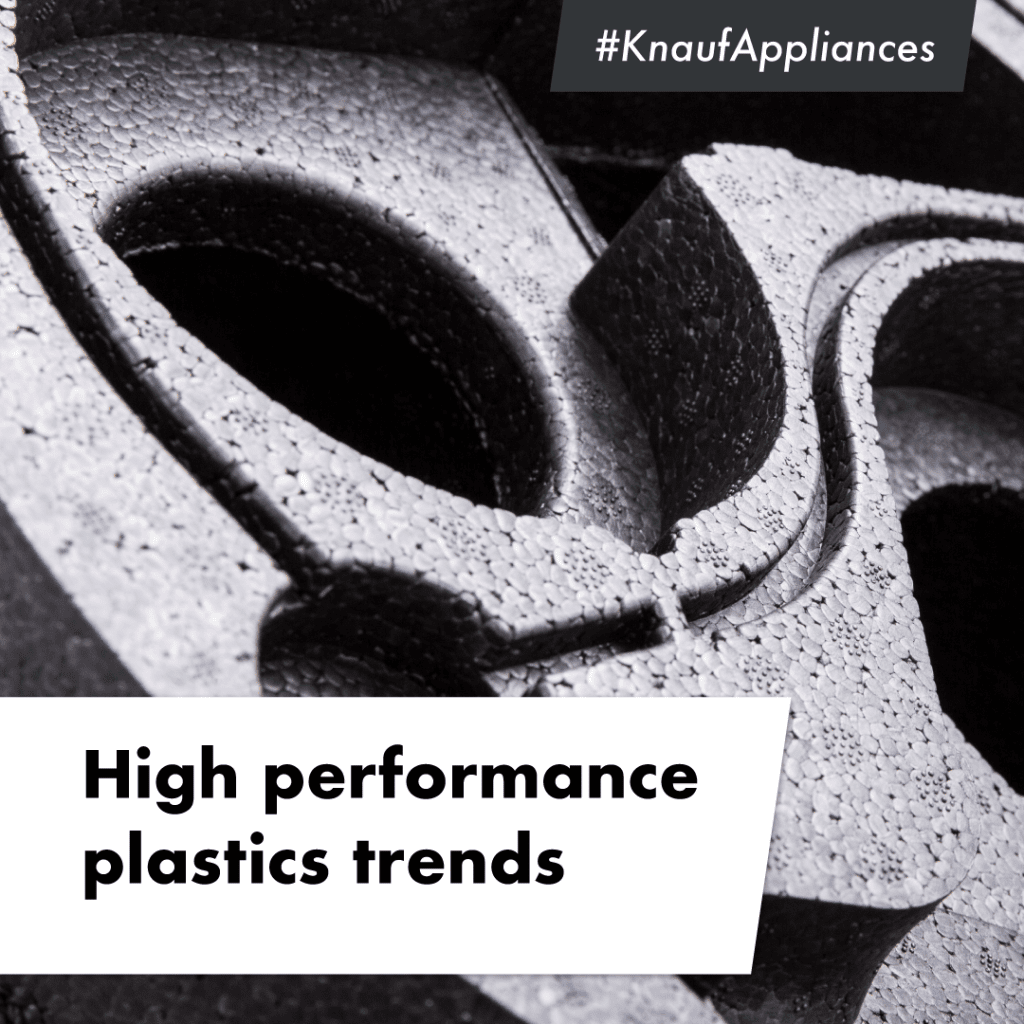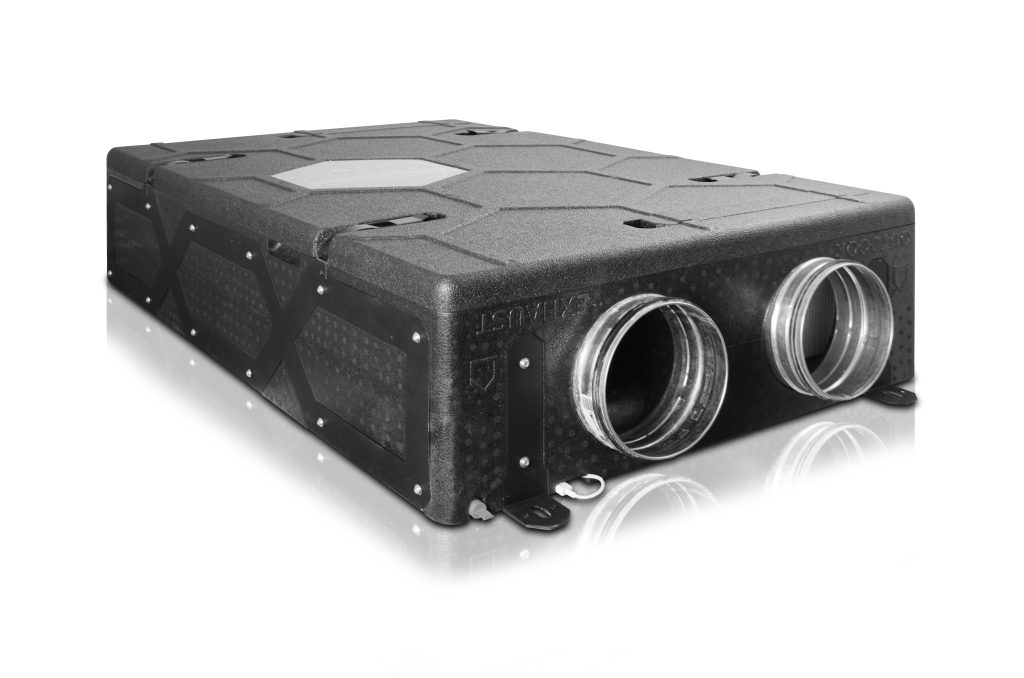‘I want an efficient air conditioning system that does not consume much energy and makes no noise’. Users are clear about their desire for comfort inside their homes or offices. New solutions for technical parts in HVAC systems can turn these expectations into reality.
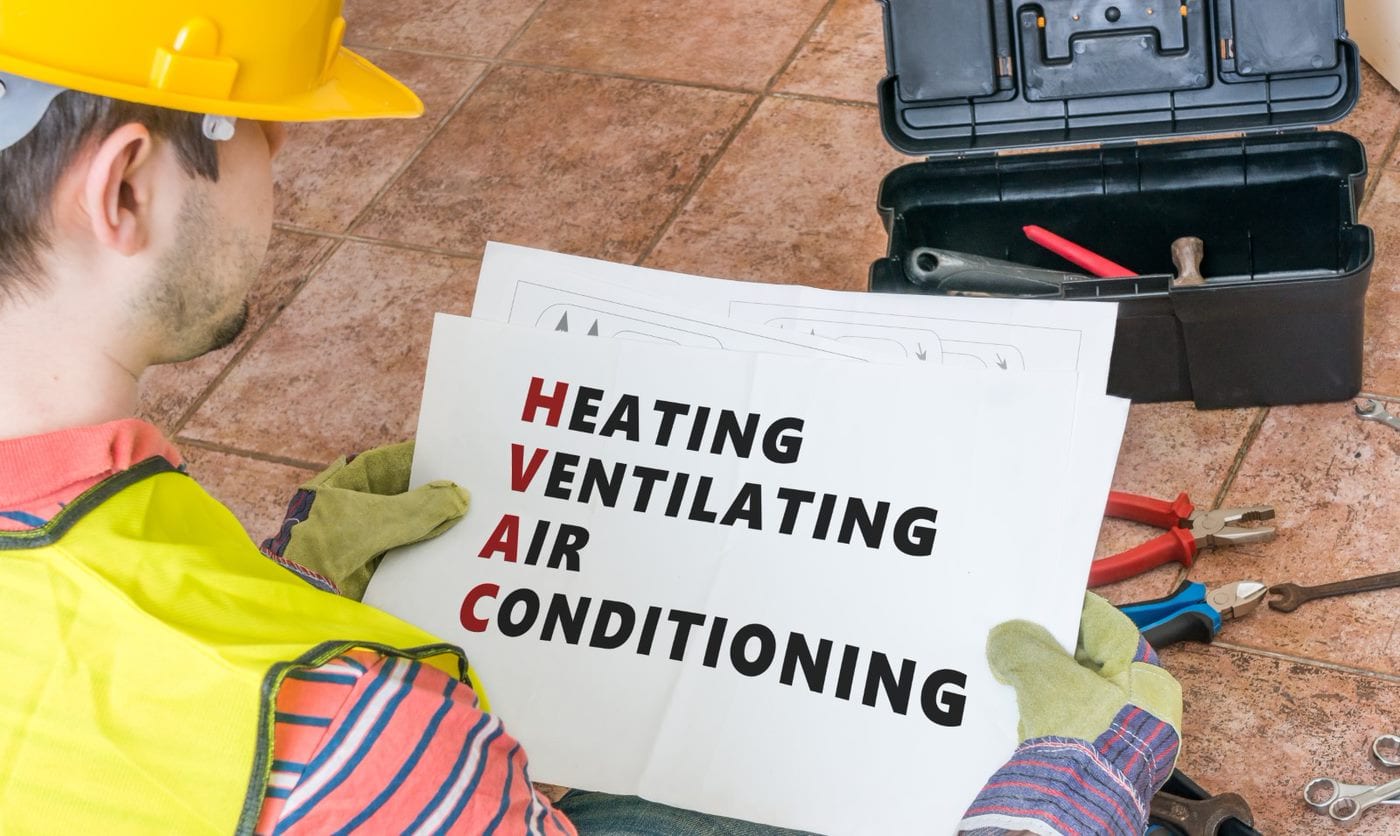
The challenge for manufacturers is to choose those technical parts that can significantly improve performance and reduce costs.
In recent years, great strides have been made in the design and manufacture of HVAC components with expanding foams. Developments that already allow manufacturers of air conditioning and ventilation equipment to stand out from the competition.
These solutions benefit from the intrinsic properties of these materials, such as thermal insulation, vibration damping and light weight. Because they are foams, they can be easily moulded.
Technical parts in HVAC systems: common problems and how to solve them
HVAC (Heating, Ventilation, Air Conditioning) equipment usually includes the following technical components:
- insulating foam
- coolant
- various parts made of stainless steel, iron and other metals
- glass
- electronic components
- plastic parts
HVAC Technical parts include components such as insulation, ductwork, and equipment that are essential for the proper functioning of heating, ventilation, and air conditioning systems.
The main technical or handling problems usually occur in metal gears or because of them.
Temperature loss
Metal is an excellent conductor of heat. To counteract this and maintain thermal stability, materials with low thermal conductivity are used in thermal insulation in HVAC systems.
Overheating
HVAC systems can overheat. The user notices this because it increases energy consumption without noticeable beneficial results. If this is prolonged over time, it can lead to a breakdown. It can even cause a dangerous short-circuit.
It is usually due to clogged air filters, coolant leaks or a build-up of dirt on the condenser coils.
Maintenance that includes regular cleaning of the equipment, or the replacement of clogged or damaged parts, will ensure that our equipment functions properly.
Air leakage
Ventilation systems require a constant flow of air. However, elbow joints or pipe assembly points are critical points where some of this flow can escape.
This affects the indoor air quality of the building and results in energy costs that do not lead to greater comfort. Not to mention the environmental impact of malfunctioning equipment.
To repair them, sealants are injected into the leakage points. Or, better still, the articulated structures, screws and other adjustment elements are replaced by ad hoc parts made of expanded foam.
Rust and moulds
Condensation and/or water seepage on a constant basis can lead to the appearance of rust, corrosion or mould. As a consequence, indoor air quality deteriorates, which compromises the health of the users.
Condensation around pipes in winter can freeze and cause bursting as it increases in volume.
This is prevented by hydrophobic but breathable insulating materials, so that water can drain away to the outside.
Vibrations and noise
When air passes through them at high speed, the metal components produce noise. This air flow can cause vibrations in the mechanisms, all the more so if the parts become loose as a result of these constant movements.
The consequences are quickly felt: lower equipment performance and an annoying noise that makes it difficult to concentrate at work, sleep at home and can even be a source of conflict with neighbours.
Excessive vibrations often lead to component failure or breakage. They can be prevented by isolating components that absorb and contain these vibrations.
Excessive weight
HVAC equipment can be very heavy. This makes it difficult to handle, encourages deformation or crushing of the most vulnerable parts, and may make it unviable to install in false ceilings or unreinforced structures.
Lightening the parts facilitates installation and reduces occupational hazards during handling. It also makes transport cheaper.
Expanded foams as a solution for HVAC insulation
Expanded foams, also called expanding foams or expandable foams, provide a high level of thermal, hydrophobic and acoustic insulation. That is why they are the manufacturers’ favourite HVAC insulation materials, in particular, expanded polypropylene foam (EPP), expanded polystyrene foam (EPS) and its renewable equivalent, NEOPS®.

More energy efficiency with expanded foam insulation
This equipment consumes a lot of electricity to heat, cool or maintain the temperature. Proper insulation maintains fluid temperatures and prevents dangerous overheating and leakage.
All this results in improved energy efficiency in HVAC systems.
Traditionally, these systems have been made of sheet metal and insulation bars. However, these structures fall short of current national and international standards.
For example, air recovery units must now have less than 3% air leakage of the rated airflow in order to be certified. These levels are impossible to meet with conventional metal structures.
Expanded polystyrene (EPS) or NEOPS® insulation systems allow engineers to design and implement perfectly insulated housing parts, optimising energy costs.
High-density EPP parts, by their very composition (95% air-filled spheres) also prevent the diffusion of heat or cold. This foam is used as duct and pipe insulation in ventilation systems. It is also used in water heaters, pumps, filters and motors.

Sound insulation for maximum comfort
When buying, users ask about kilowatts and cooling capacity, but also about the decibels generated by the equipment when operating at full capacity.
Expanded foams attenuate vibrations and dampen noise. This achieves the comfort that the user expects to obtain with this equipment. In fact, whether an appliance is quieter is often the deciding factor when purchasing an HVAC system.
Cost savings and reduction of failures
EPP and EPS foams offer ease of moulding, versatility and more competitive prices than other raw materials.
One of the great advantages offered by EPP to industry is precisely the possibility of replacing mechanisms consisting of various technical parts made of metal or other materials, with all their screws and other fasteners, with custom-moulded EPP parts and structures.
This development makes it possible to cut assembly line time by up to 40%.
It also reduces the time needed to manufacture components, or to manage material orders and storage. By pure mechanical logic, the fewer parts included in a mechanism, the less likely it is to malfunction, fail or become incompatible. This translates into a 45% increase in productivity.
All of the above can be summed up in one sentence: reduction of production costs.

Healthier interiors with water-repellent insulation
EPP and EPS are inert materials with high resistance to water and moisture. Incorporating them in equipment through which breathing air or shower water flows is a guarantee of healthiness for users.
In fact, achieving healthy interiors is one of the major concerns of today’s building industry. Keeping mould, rusted parts or damp areas at bay where pathogens can proliferate is essential to consider a building as ‘healthy’.
Lighter equipment
We have already seen that EPP can be used to mould single parts capable of replacing entire assemblies of metal parts. This development not only saves assembly time; it also lightens the weight of the equipment.
This makes them easier to transport and install. In addition, the lighter weight also reduces transport fuel costs and the associated carbon footprint.
How Knauf Appliances can help with HVAC system upgrades and maintenance
Knauf Appliances has the technical and human resources to eco-design and manufacture HVAC insulation solutions in expanded foams modelled for each piece of HVAC equipment. In addition, it offers a range of services including system upgrades, maintenance and repair services.
EPS, EPP and NEOPS® are durable mono-materials that guarantee a long life cycle of the equipment and minimise maintenance work.
Its ease of modelling allows customised parts to be developed using the most advanced 3D engineering software.
If a customised technical part needs to be replaced, or HVAC system upgrades need to be undertaken, the cost in time and money will be much lower than if several parts with their corresponding fasteners need to be ordered. In this case it is only necessary to contact a reliable supplier.
The processes of installation and removal of damaged parts are also sped up. There is no screwing, bolting or gluing; rather, the parts snap perfectly into position.
This also reduces material costs and labour time.

Benefits of using expanded foams in HVAC technical equipment
The air conditioning sector is going through a period of great dynamism. Users want comfortable, well-ventilated and healthy houses, without bad smells or moisture problems.
They want all this without running up their energy bills, and are increasingly concerned about the environmental impact of their household appliances.
Remember that buildings account for 40% of energy consumption in the EU and 39% of greenhouse gas emissions. Moreover, 80% of that consumption goes towards heating, hot water, ventilation and air conditioning. That is, towards HVAC equipment.
Optimising their operation throughout their life cycle enables HVAC energy savings, contributes to sustainability and moves towards the goal of carbon neutrality by 2050.
Expandable foams from Knauf Industries contribute to achieving these goals.

Furthermore, they are mono-material and are 100% recyclable at the end of their life cycle through mechanical recycling. This further reduces the carbon footprint of air conditioning equipment, heating and ventilation systems.
